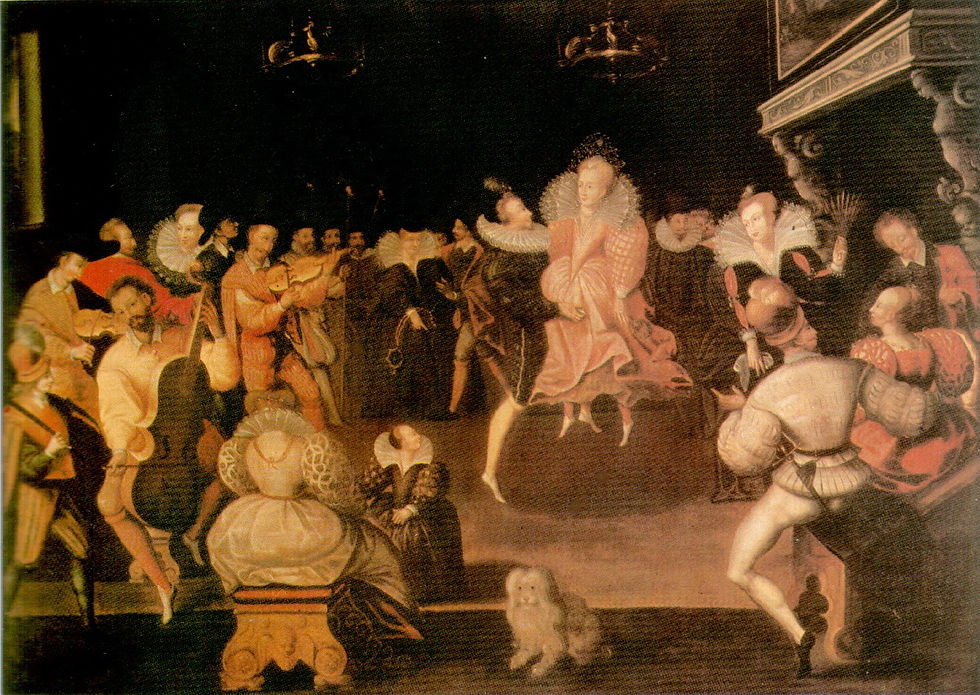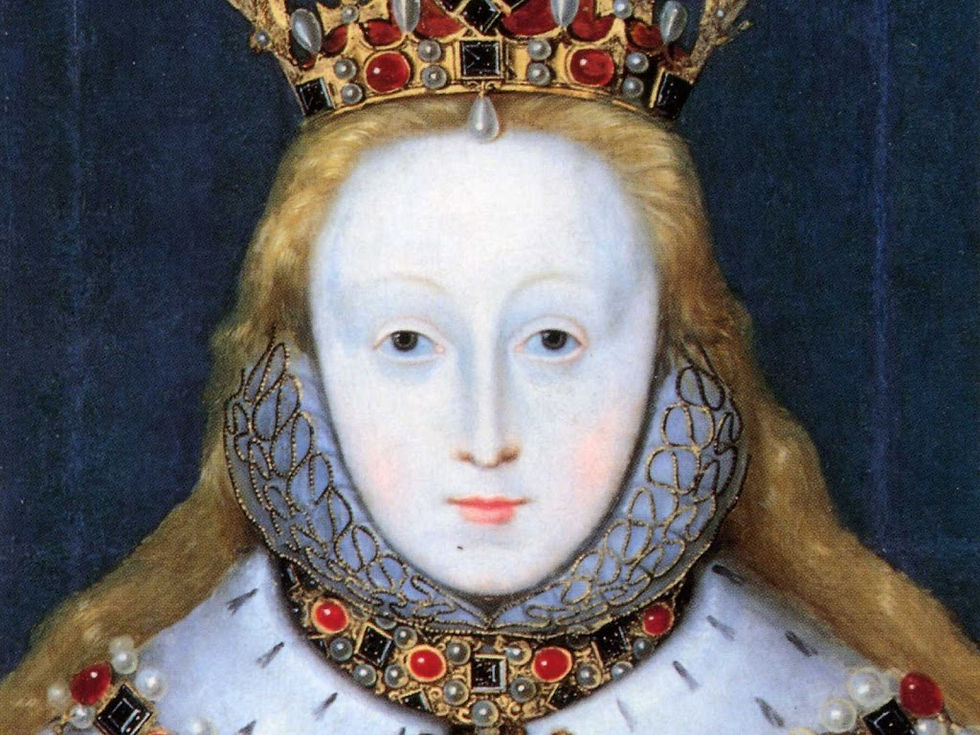An Introduction to the Elizabethan Dance World
- Mariela Rivero

- Sep 17, 2021
- 4 min read
Updated: Aug 14, 2022
In honor of National Dance Day, let’s take a gander at the Elizabethans’ passion for dance!
Topics Include:
Elizabethans - The Early Triple/Quadruple Threats?
Dance in Plays
Dance Schools
Queen Elizabeth I’s Influence
Class Divides
Upper Class & Lower Class Dances
Elizabethans - The Early Triple/Quadruple Threats?
Have you ever heard of a “triple threat”? In today’s entertainment industry, this term typically refers to someone who can act, sing, and dance. For many years, proficiency in all three disciplines served as a significant competitive advantage. However, with the quickly increasing number of triple threats, numerous professionals now feel pressured to become quadruple threats - at a bare minimum.
Though many might assume the demand for triple threats arose from recent decades’ high-scale Broadway musicals, performers have actually been expected to possess a range of abilities for hundreds of years. During the Elizabethan Era (1558-1603), all actors HAD to be able to dance. Several also mimed, mastered acrobatics, played instruments, and knew their way around a sword… In short, they weren’t just triple or even quadruple threats. They were - quite literally - so much more.
Dance in Plays
EVERY actor NEEDED dance skills?! Weren’t the plays then… just plays? NOT musicals? Yes indeed! But they still danced… Even in Julius Caesar - one of Shakespeare’s most famous tragedies - the actors danced after the last line. What a pleasant shift of mood.
Interestingly, it was actually quite normal for performers to dance onstage after the show. In fact, it was expected. Moreover, often in Elizabethan theatre, musical interludes separated acts, perhaps to relieve the audience whose mental energy was spent keenly focusing on rapid dialogue, which gave critical insight regarding changes of setting & relationships.
Fun Fact #1: Out of a survey of 237 Elizabethan plays, 29% of them called for dancing in the script.
Fun Fact #2: If you’re interested specifically in Shakespeare (which you likely are if you regularly read this blog :) here are some more stats! Across the Bard’s plays & poems:
About 500 passages concern music (to be played, sung, or danced to)
12 different dances are mentioned
He brings up dancing 50 times
Dance Schools
London dance schools thrived during this time. Those who could not afford such expensive local lessons traveled to France, which historians consider the period’s dance mecca. And the quality there definitely wasn’t a downgrade. George Villiers, First Duke of Buckingham, returned to England from his studies in France "with the distinction of being the finest dancer in the country.” We’re sure the English training centres were just thrilled about that.
Queen Elizabeth I’s Influence
Queen Elizabeth LOVED dances. When she watched them, she enthusiastically embodied “the cadence with her head, hand and foot.”
But she certainly didn’t attend them just for the comfy spectator chair. In fact, she so loved participating that she had her court join her in performing up to seven Galliards every morning! (For perspective, a Galliard was one of the most “athletic” dances of the era.) “This passion for the dance seemed to have run in the family, since Henry VIII was described by a foreign ambassador as a ‘truly indefatigable’ dancer who particularly liked the lusty, gay, and amorous type of dance.”
Even into her old age, witnesses saw their queen happily dance Galliard upon Galliard.
To her crowds of adoring fans, she was the ultimate influencer. Thus, her ardor for dance was most contagious. “In 1587 a Puritan writer complained that ‘London is so full of unprofitable pipers and fiddlers that a man can no sooner enter a tavern than two or three of them hang at his heels, to give him a dance before he depart.’”

Queen Elizabeth I Dancing with Robert Dudley, Earl of Leicester. Painted c.1580
Class Divides
Dances performed by the aristocracy could easily be distinguished from those of the lower class by their stark difference in complexity. The nobles’ dances’ complicated nature ensured they “had” to be learned at prominent schools, a privilege only accessible for the wealthy. New aristocratic dances and the latest sophisticated music were often released simultaneously.
On the other side, most lower-class dances (aka country dances) were simple and passed down from previous generations.
Super Fun Fact: The nobility actually frequently performed country dances at court. However, the dances had to first be “refined” & taught in top-tier schools, as copying the lower class was socially unacceptable.
Why did they go through all the trouble of “sophisticating” these “improper” dances? “One of the courtiers during the reign of James I made the sarcastic remark that it was easier to put on fine clothes than to learn the dances of the French and that therefore ‘none but country dances’ were seen at the Court.” Basically, the French dances were so hard that even those who practiced them day in & day out with the finest teachers struggled. And that lack of aptitude was… embarrassing.
Upper Class & Lower Class Dances
Below you’ll find a sampling of popular dances from the era- See how many you recognize!
Upper Class
Pavane / Pavan
Galliard
Tintertell
Saltarello
Ballet
Lower Class - often performed at fairs & festivals
Brawle
Jig
Morris Dancing
Maypole Dancing
Hornpipe
Below is a clip of the Galliard. Feel free to slow the video enough to learn the steps!
Discussion
How many examples of dance in Shakespeare can you recall off the top of your head?
Just for fun, see if you can guess which play’s script ends with “‘Strike up, pipers.’ Dance.”
What are your thoughts on the nobility using traditional English country dances but needing to “upgrade” them first?
Written by Mariela Rivero
Edited by Laura Yumi Snell
Quoted Reference:
All quotes are taken from Shakespeare and the Dance by Walter Sorell.






yes yes very good